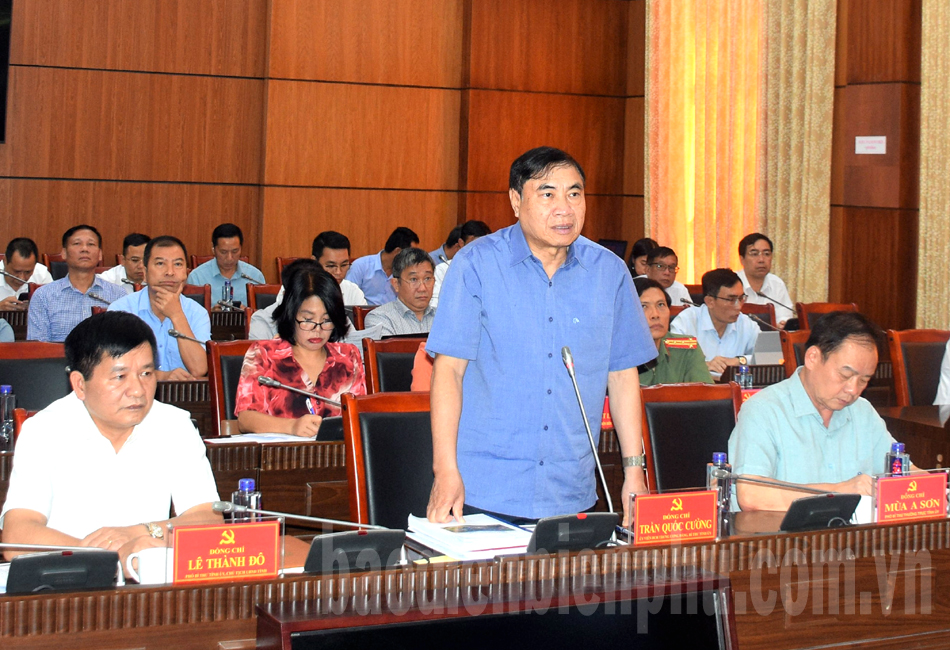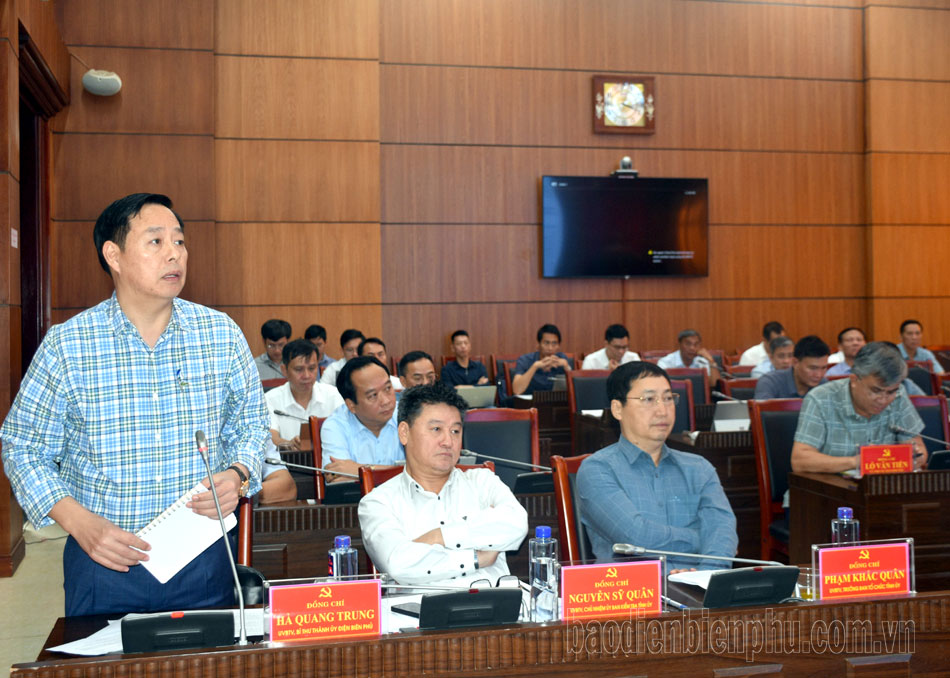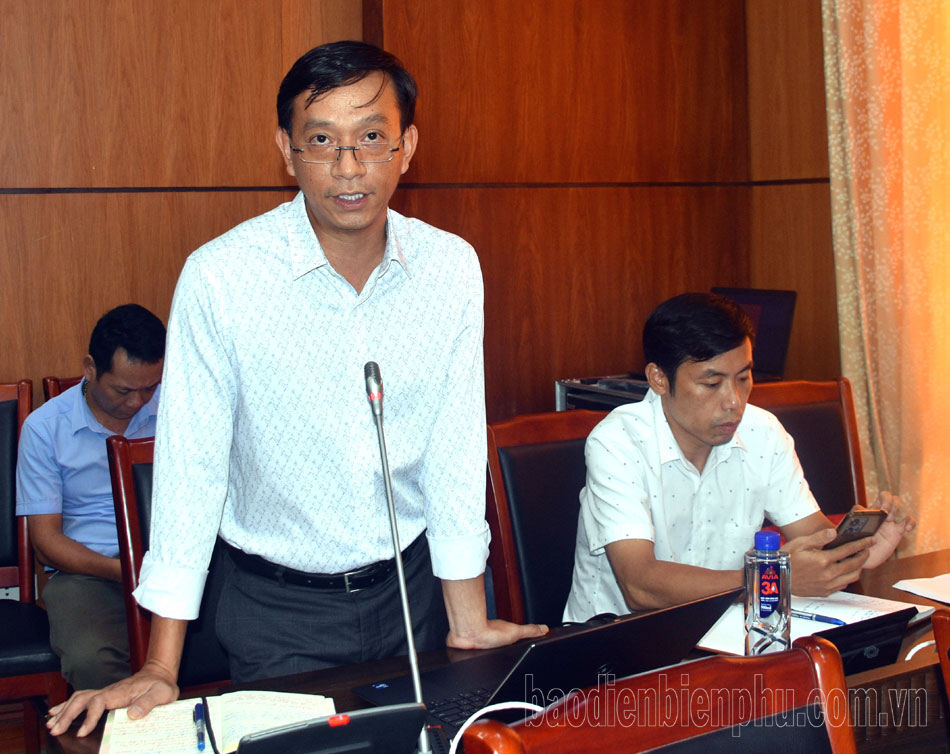
Trần Quốc Cường, Member of the Party Central Committee and Secretary of the Provincial Party Committee delivers a speech at the meeting.
In attendance were Mùa A Sơn, Permanent Deputy Secretary of the Provincial Party Committee; Lê Thành Đô, Deputy Secretary of the Provincial Party Committee and Chairman of the Provincial People's Committee; Mùa A Vảng, Alternate Member of the Party Central Committee, Member of the Standing Committee of the Provincial Party Committee, and Chairman of the Provincial Vietnam Fatherland Front; along with members of the Standing Committee, provincial leaders, and heads of various departments and agencies.
According to the Provincial People's Committee's report, the general planning for Điện Biên Phủ City by 2045 is based on a comprehensive review and assessment of the city's current urban conditions, aligned with the planning tasks approved by the Prime Minister. The planning work encompasses space development, land-use planning, urban design, and technical infrastructure, ensuring compliance with current standards and regulations while fitting local conditions.
The planning covers the entire boundary of Điện Biên Phủ City, with a total area of 306.58 square kilometres and a population of 86,003 people, as per the 2023 Điện Biên Phủ City Statistical Yearbook. The city is divided into 12 administrative units, including seven wards (Mường Thanh, Tân Thanh, Him Lam, Thanh Trường, Thanh Bình, Nam Thanh, and Noong Bua) and five communes (Thanh Minh, Mường Phăng, Nà Tấu, Nà Nhạn, and Pá Khoang).

Lê Thành Đô, Deputy Secretary of the Provincial Party Committee and Chairman of the Provincial People's Committee speaks at the meeting.
The plan envisions developing Điện Biên Phủ City with a strong emphasis on tourism and services, aiming to position tourism as a key economic driver. The development strategy is structured around three main pillars: historical, cultural, and social tourism; eco-tourism, leisure, and nature exploration; and recreational and sports tourism.
The city is set to become a gateway for international tourism routes to the northwest region and the entire country. During the review of the general planning for Điện Biên Phủ City by 2045, delegates commended the proposal for effectively leveraging the city's geographical, natural, historical, and resource advantages.
The plan lays the groundwork for transforming Điện Biên Phủ City into a hub for administration, politics, economics, culture, education, science, and tourism services, positioning it as a major contributor to the province's overall economic development.

Hà Quang Trung, member of the Standing Committee and Secretary of Điện Biên Phủ City’s Party Committee, delivers remarks during the meeting.
Delegates also discussed and recommended clarifying the city's transportation links with neighbouring districts and exploring the possibility of adding new routes. They called for further analysis of the locations of schools and medical facilities in relation to urban development. Additional infrastructure topics discussed included water supply, electricity, wastewater treatment, social housing, and public parking areas.
Regarding residential areas, it was noted that changing geological conditions require further research to ensure appropriate housing placements.
In his concluding remarks, Provincial Party Secretary Trần Quốc Cường emphasised that Điện Biên Phủ is a heritage city, closely tied to the special national historical site of the Điện Biên Phủ Battlefield. He underlined the city's role as a provincial and regional tourism centre, with the long-term potential to become a national tourism hub. Additionally, the city will serve as a centre for administration, politics, economics, culture, and national defence and security for the province.
Cường stressed the importance of approaching the city's planning with scientific rigour and comprehensiveness. He called for more clarity on population, labour, and ethnic factors in relation to housing, hospitals, and schools. He also emphasised the need to allocate land for social housing and to advance education, healthcare, culture, and sports. Furthermore, the planning should consider relocating colleges and hospitals away from the city centre and promoting stronger transportation development and regional connectivity with other cities and provinces.

A representative from the consulting unit presented the general planning for Điện Biên Phủ City by 2045.
The Provincial Party Secretary urged the Department of Construction and the consulting unit to incorporate feedback from Standing Committee members and leaders from the four districts adjacent to Điện Biên Phủ City.




.jpg)
.jpg)



.jpg)
.jpg)
.jpg)
.jpg)

.jpg)
.jpg)
.jpg)
.jpg)

.jpg)
.jpg)
You have 500/500 characters left
Please enter 5 or more characters!!!